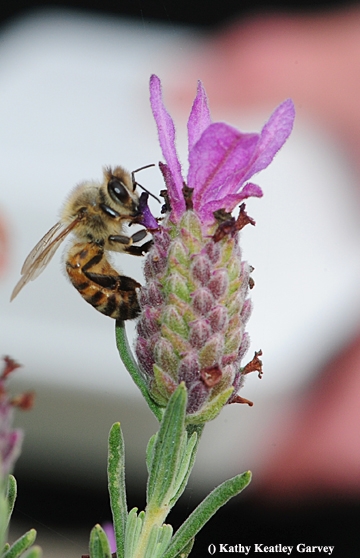
'Cept when it's a fly.
Lately we've been seeing lots of images on social media (including Facebook and Twitter), news media websites, and stock photo sites of "honey bees."
But they're actually flies.
Will the real flies come forth?
Today we saw several drone flies, Eristalis tenax, sipping nectar from our Mexican sunflower (Tithonia). Native pollinator specialist Robbin Thorp, emeritus professor of entomology at the University of California, Davis, jokingly calls this drone fly "the H bee." Why? There's an "H" pattern on its abdomen.
The drone fly and honey bee are similar in size and both are floral visitors in their adult stages. However, the drone fly is quite distinguishable from a honey bee. The fly has large eyes, stubby antennae and one pair of wings.
The larvae of the drone fly is a rat-tailed maggot that lives in drainage ditches, pooled manure piles and other polluted water.
Unlike a honey bee, the drone fly "hovers" over a flower before landing. The fly belongs to the family Syrphidae (which includes insects commonly known as flower flies, hover flies and syrphids) and the order, Diptera. The honey bee is Apis mellifera, family Apidae, order Hymenoptera.
The case of mistaken identity can cause excruciating pain. A journalist will spend half a day interviewing bee experts about bee health--investigating colony collapse disorder, malnutrition and Varroa mites--only to have a copy editor illustrate the prized bee story with a fly. It's more horrific than Halloween.
Likewise, Facebook editors have been known to turn a fly into a bee faster than the beat of a wing. And photographers who know more about "F" stops than "H bees" post misindentified photos on Flickr or sell their mislabeled images to stock photo businesses.
The old saying, "If it looks like a duck, quacks like a duck and walks like a duck, it's probably a duck" doesn't ring true in "the drone bee vs. the honey bee" identity crisis.
If it looks like a bee, acts like a bee and buzzes like a bee, it may be...a drone fly.
Attached Images:


